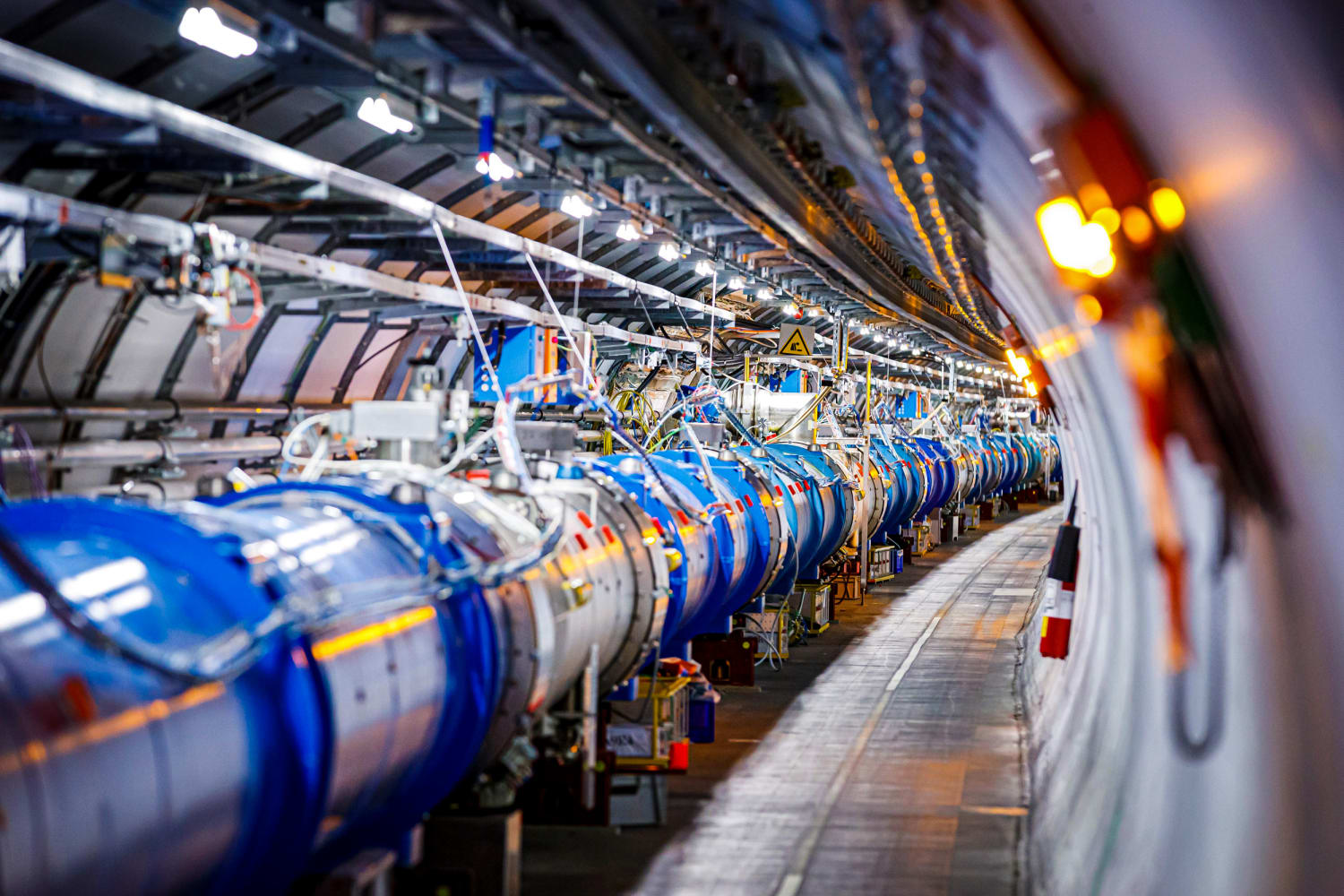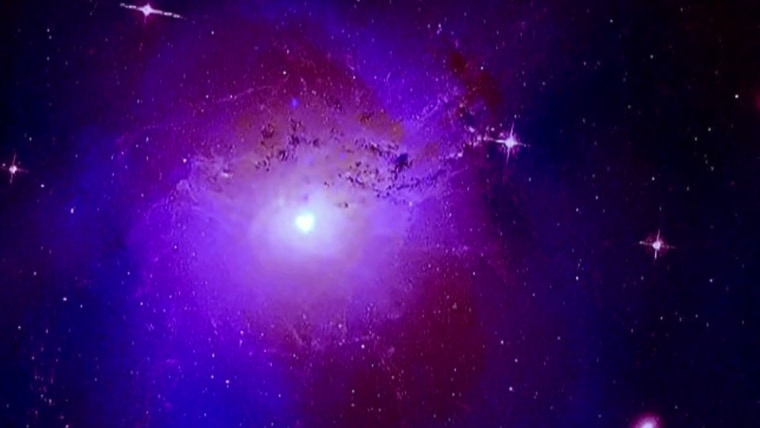Faster, better, stronger.
A new phase of operations at the Large Hadron Collider — the world’s largest particle accelerator — is scheduled to start in a few weeks, just a day after the 10th anniversary of its greatest achievement so far: the discovery of the long sought-after Higgs boson.
The collider’s reopening (it’s been closed since 2018) is an important event for global science, as what is generally considered one of the biggest science experiments ever conducted has already helped reveal important details about the fabric of reality.
The Higgs discovery in July 2012 affirmed the Standard Model of Particle Physics, which still holds sway as the best explanation of how matter works. But scientists hope the latest LHC run will explain even greater mysteries of existence — including the invisible particles that make up dark matter, and just why there is anything here at all.
“We’re now ready for Run 3,” said Rende Steerenberg, who heads beam operations for CERN, the international organization that runs the LHC — a vast hidden ring of tunnels and detector caverns built deep underground beneath fields, trees and towns on the border of France and Switzerland, over 5 miles across and more than 16 miles around.
The LHC has been dormant for more than three years while it’s been upgraded with tens of millions of dollars worth of improvements — the upgraded facility will achieve energies of up to 13.6 trillion electron volts (TeV), compared to just 13 TeV in the previous run — and advanced detecting equipment to better examine the chaotic explosions inside the giant atom smasher. It’s now being tested at low-power, and the first experimental collisions of the third run will begin on July 5.
The LHC uses giant magnets to accelerate beams of protons and atomic nuclei in opposite directions around the underground ring, and then brings them together for a series of high-energy collisions at near the speed of light. This achieves energies that haven’t been seen since the first split seconds of the universe after the Big Bang.
Studying the remnants of such collisions can tell scientists which particles formed in them, even for just the tiniest fraction of a second. Scientists theorize that the thousands of collisions performed inside the LHC every hour will produce at least some of the exotic particles they are looking for.
Steerenberg explained that latest LHC upgrade is a half-step before better detecting methods are installed after 2027, when the LHC will operate at full capacity as the “High Luminosity” LHC — its fourth and final incarnation before an even larger particle accelerator, the Future Circular Collider, comes online after 2040.
The LHC is a crucial tool for physicists. Several unsolved problems remain in the theories meant to explain physical reality — some of which date back to the early 20th century — and scientists have suggested a variety of ideas for how it all fits together. Some of those ideas work on paper, but require the existence of certain particles with particular qualities.
The LHC is the most advanced particle accelerator built so far, and was designed to look for those particles and measure them. The results are incorporated into the Standard Model, which describes all the known particles (there are currently 31, including the Higgs boson) and three of the four known fundamental forces: the electromagnetic force, the strong nuclear force and the weak nuclear force, but not gravity.
As well as allowing even more precise measurements of the particles that make up all the matter we see, scientists think the upgraded LHC can help resolve several anomalies in the Standard Model that have recently been reported.
One of the most puzzling is a discrepancy in the decay of the B-meson, a transient particle composed of two types of quarks — the subatomic particles that make up protons and neutrons.
According to theory, B-mesons should decay into electrons and muons — a related class of subatomic particles — with equal rarity. But experiments show B-mesons decay into electrons about 15 percent more often than they decay into muons, said particle physicist Chris Parkes, who leads the Large Hadron Collider Beauty (LHCb) experiment.
LHCb is named for the “beauty” quark that features prominently in the experiment’s study of the differences between matter and antimatter (quarks can also be classified as “truth,” “up,” “down,” “charm” or “strange”, depending on their characteristics).
Equal amounts of matter and antimatter should have annihilated each other in the first moments of the Big Bang, but that obviously didn’t happen: instead, matter predominates, and the LHCb experiment aims to find out why.
The reported anomaly in the decay of B-mesons is related to that question, Parkes said, and the new run of the LHC could provide insights into why the anomalous decay is happening.
“There are a lot of different measurements and, intriguingly, quite a number of them are pointing in the same sort of direction,” he said. “But there is not a ‘smoking gun’ — instead it is an intriguing picture that has been seen over the last few years.”
Another other notable anomaly is in the mass of the W-boson, a subatomic particle involved in the action of the weak nuclear force that governs some types of radioactivity.
The Standard Model predicts W-bosons have a mass of around 80,357 million electron volts, and that figure has been verified in several particle accelerator experiments.
But a series of precise experiments at the massive Tevatron particle accelerator at Fermilab near Chicago suggest instead that the W-boson weighs a little more than it should — and that it might just point to “new physics” beyond the Standard Model.
Particle physicist Ashutosh Kotwal, a professor at Duke University in Durham, North Carolina, who led the research at Fermilab that reported the discrepancy earlier this year, thinks it might be caused by a refinement of the Standard Model called “supersymmetry,” for which there’s been no firm evidence before now.
Kotwal is also a researcher at the LHC, and he hopes its upgraded run could verify that supersymmetry is more than just an idea. “It is possible that the W-boson is sensing the existence of supersymmetric particles,” he said.
And if supersymmetry does turn out to be a principle of the universe, it could explain several other mysteries — such as the nature of the ghostly “dark matter” particles that many physicists think make up around three-quarters of all the matter in the universe.
Although the gravity from dark matter particles explains the structure of galaxies, the particles themselves have never been seen and physicists can’t yet explain what they might be.
“If we look for indications of this particle directly at the LHC, that would be a manifestation of potential supersymmetry and it would be a manifestation of dark matter at the same time,” Kotwal said. “That’s the sort of thing I am pushing for.”
Source: | This article originally belongs to Nbcnews.com











